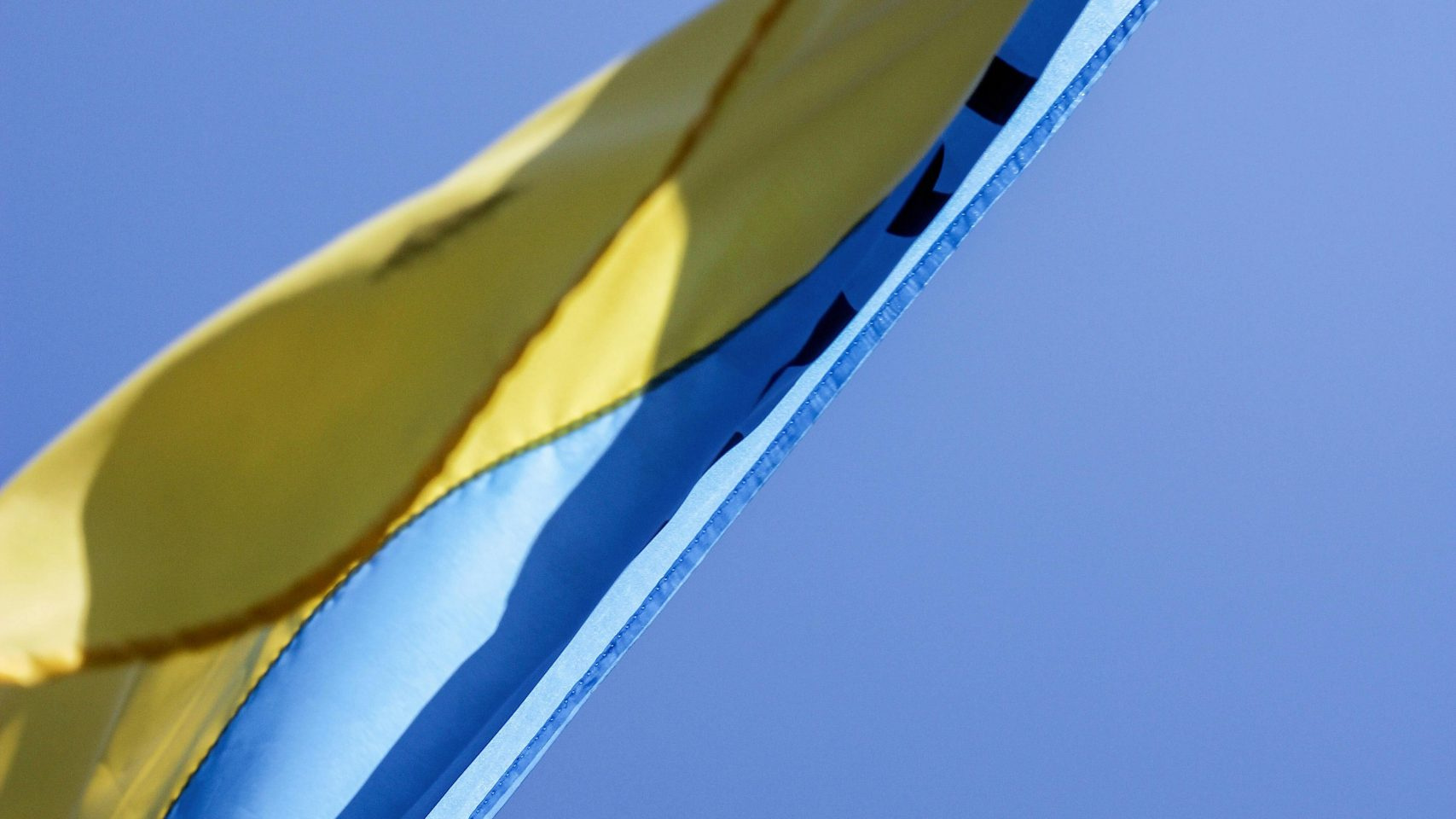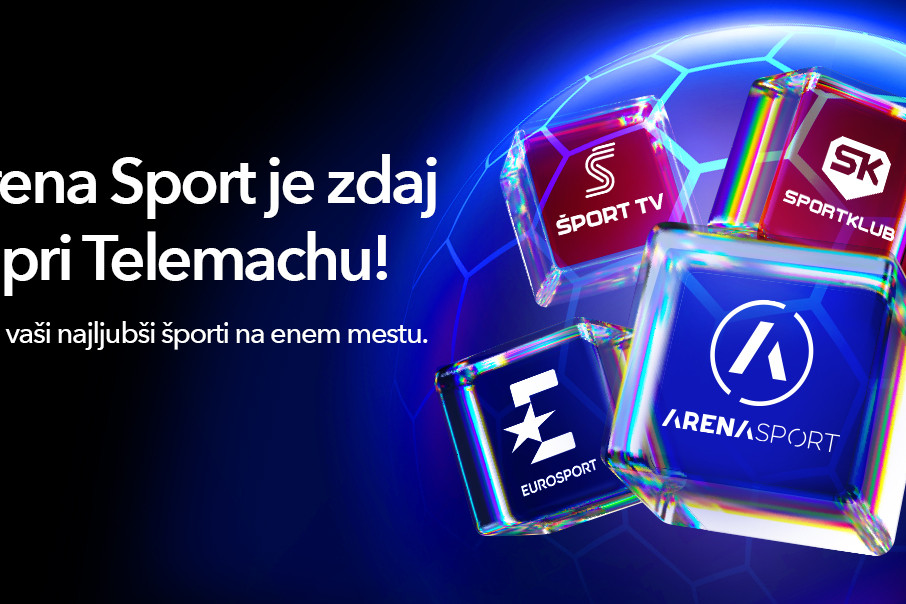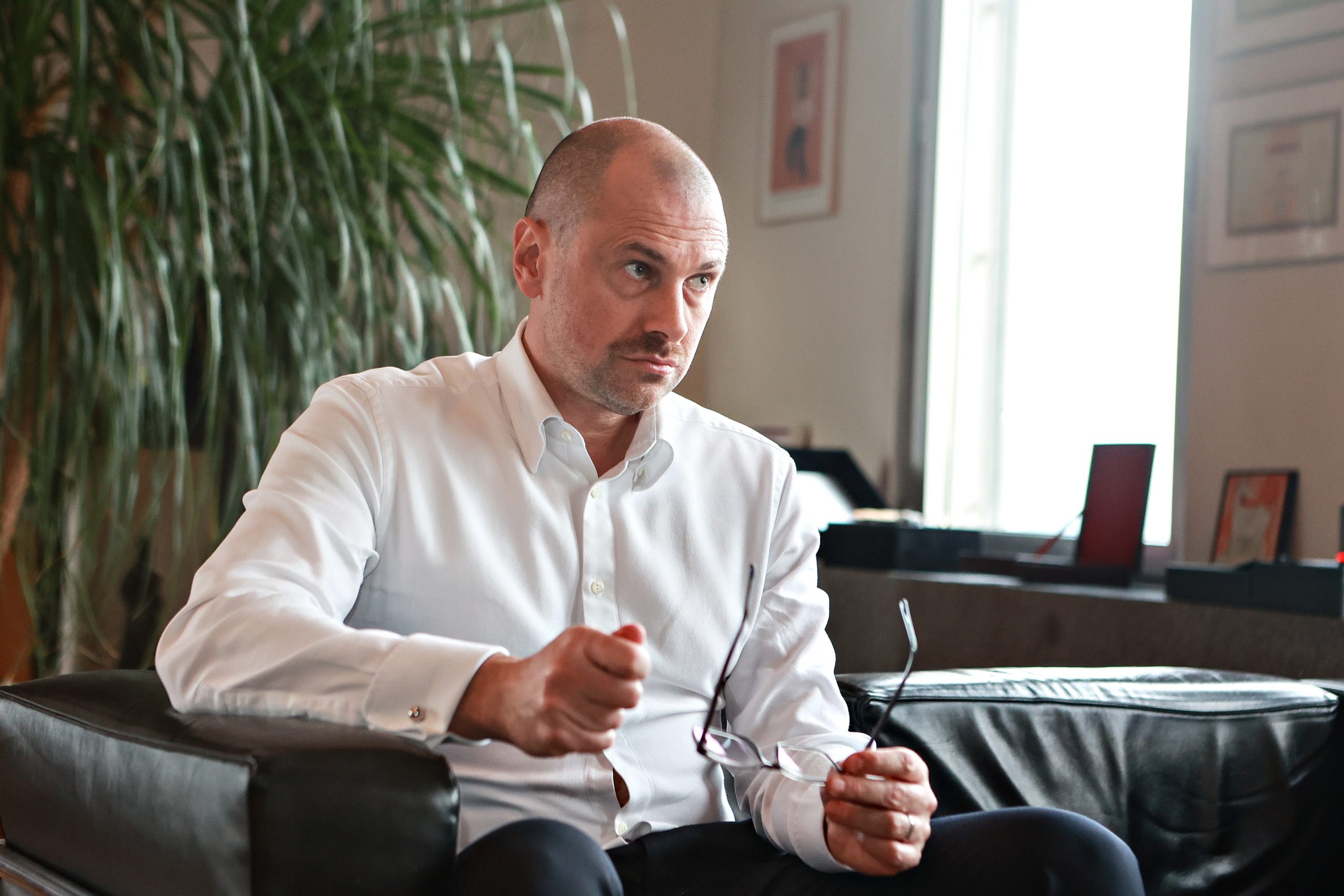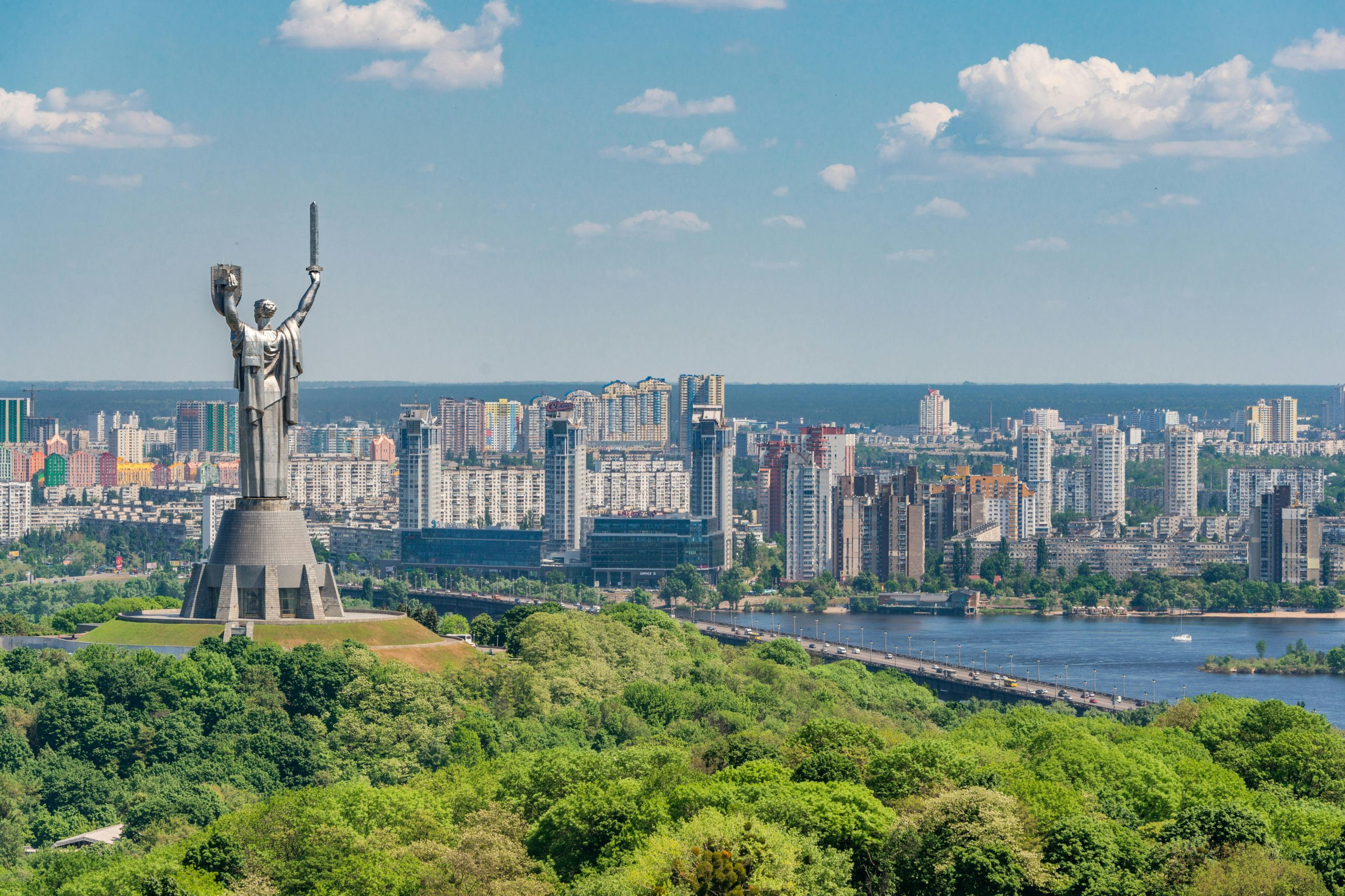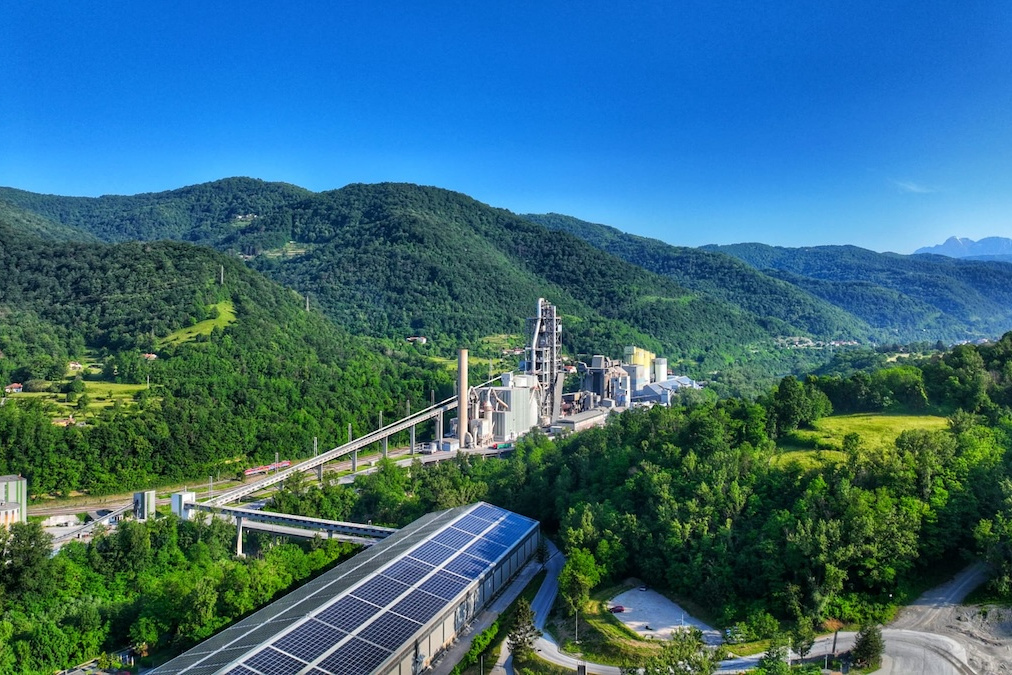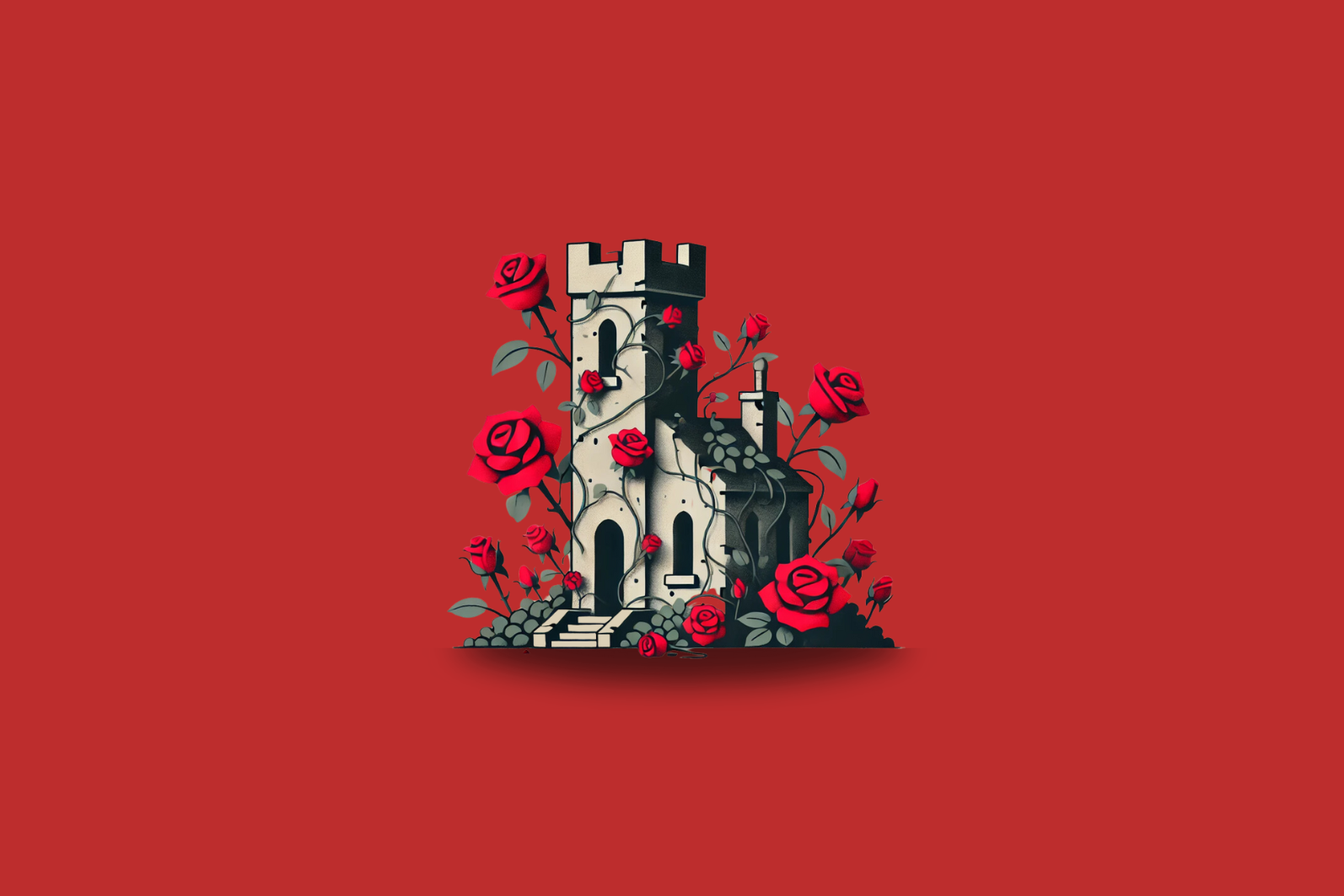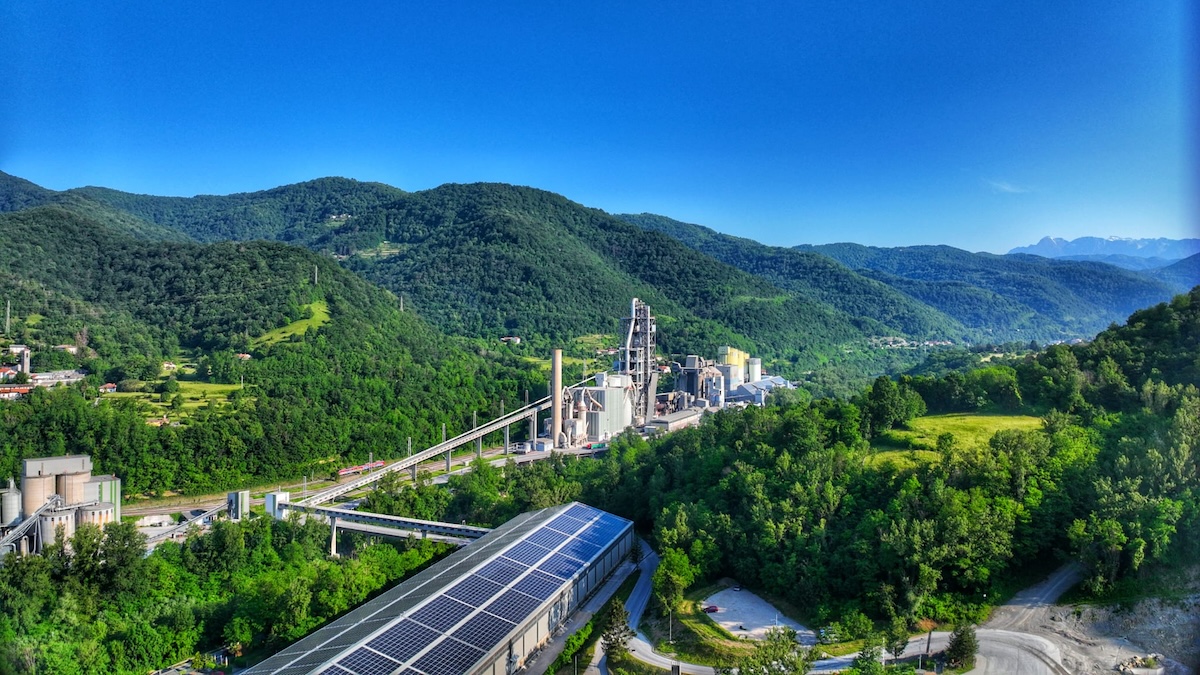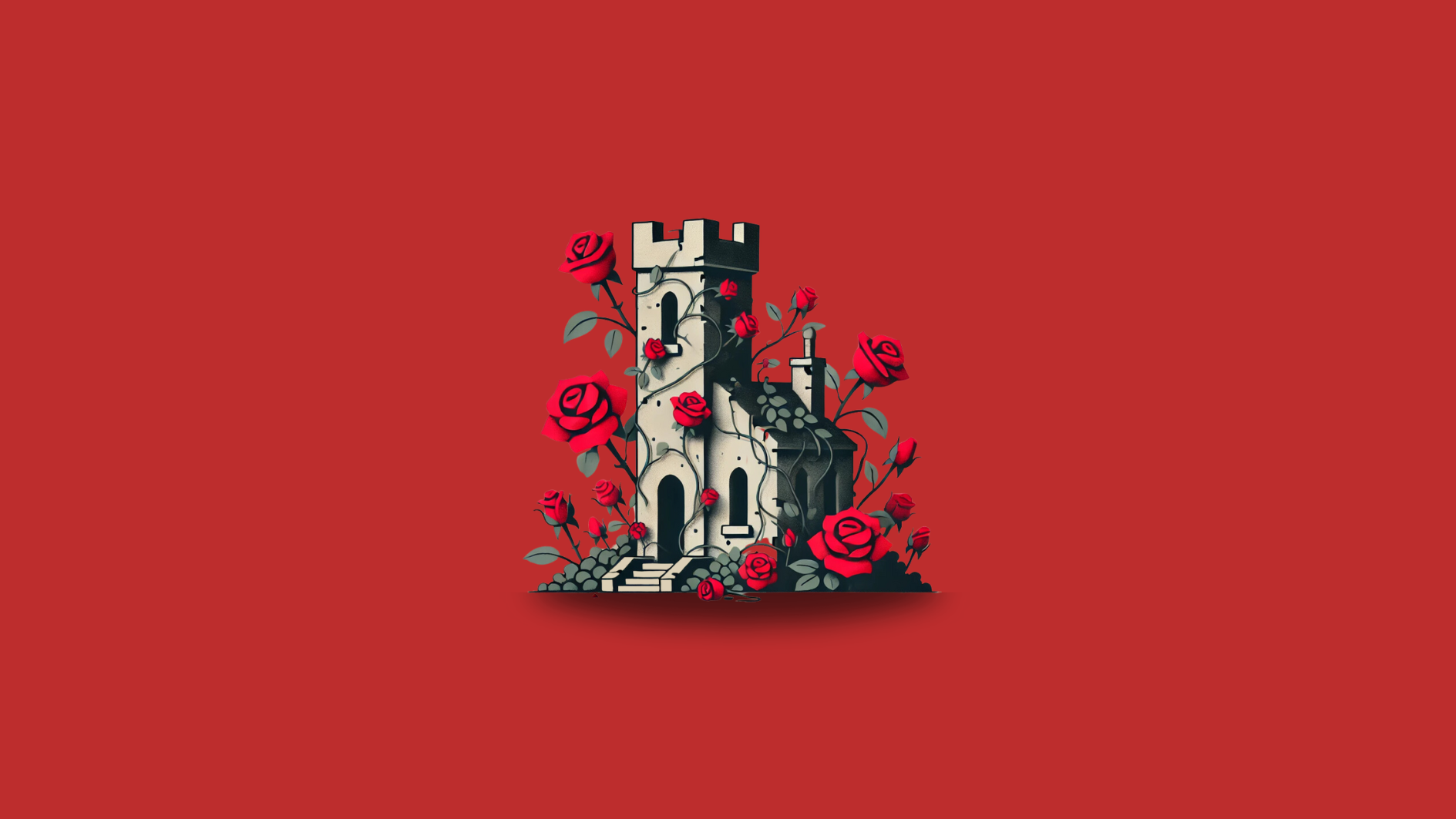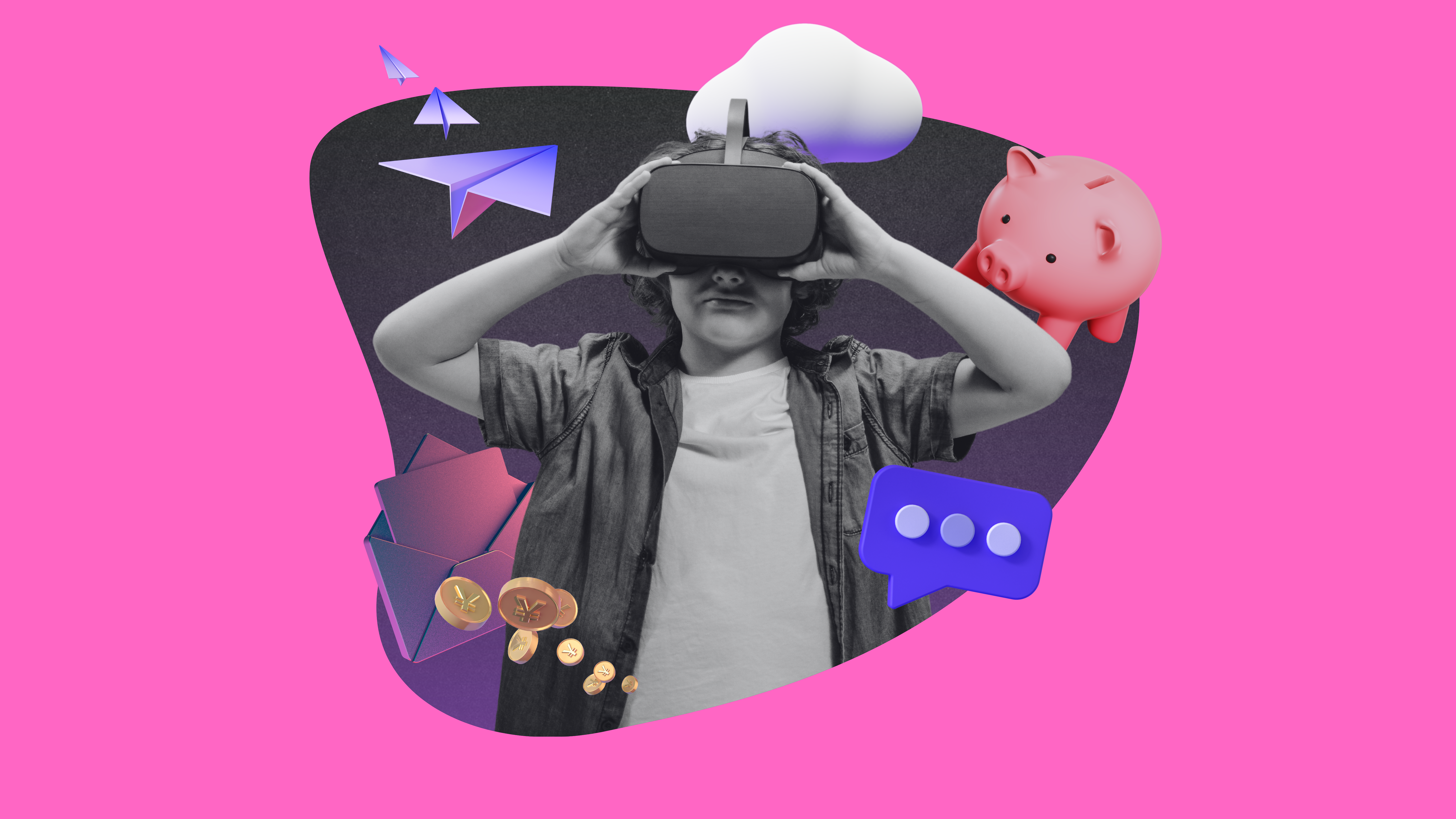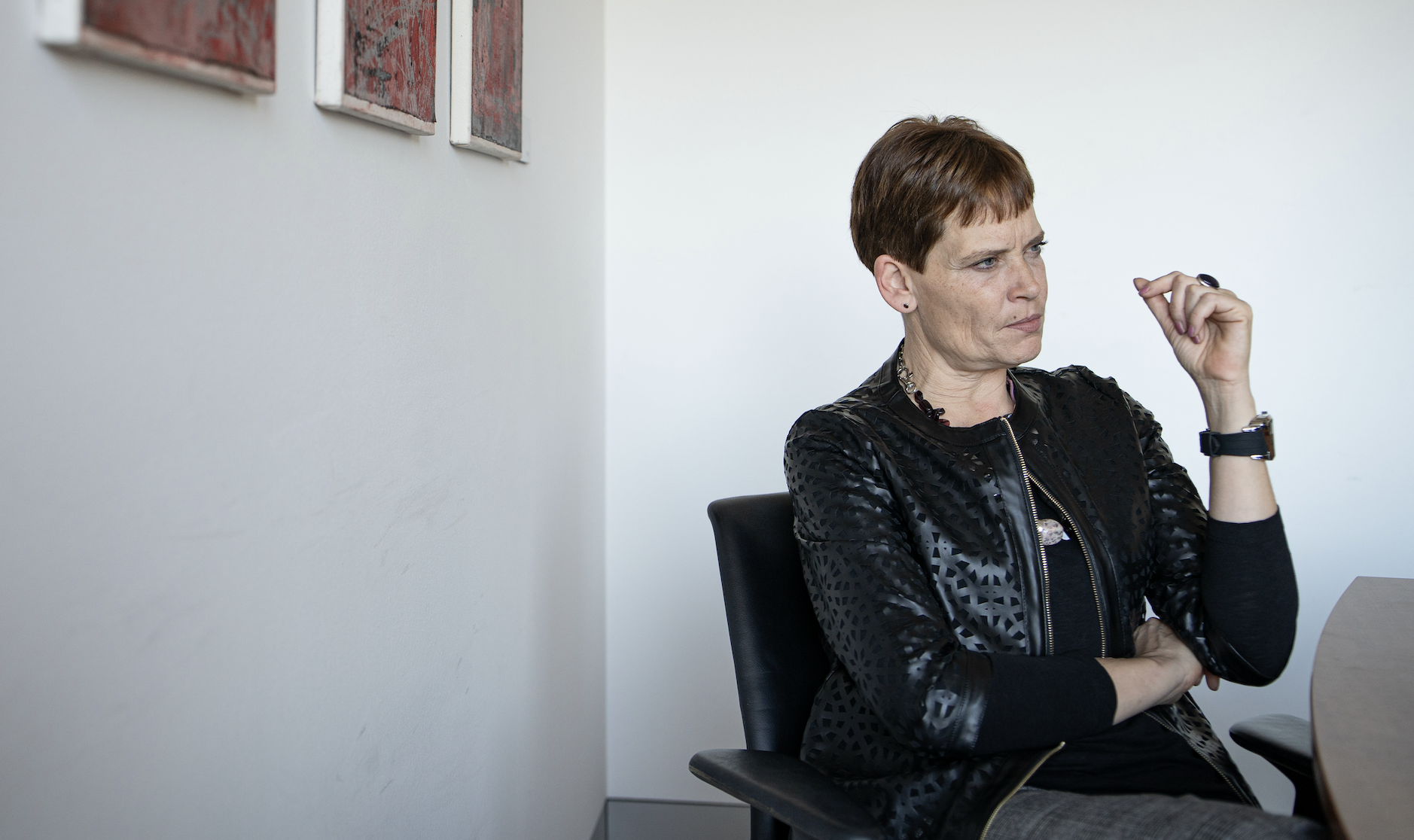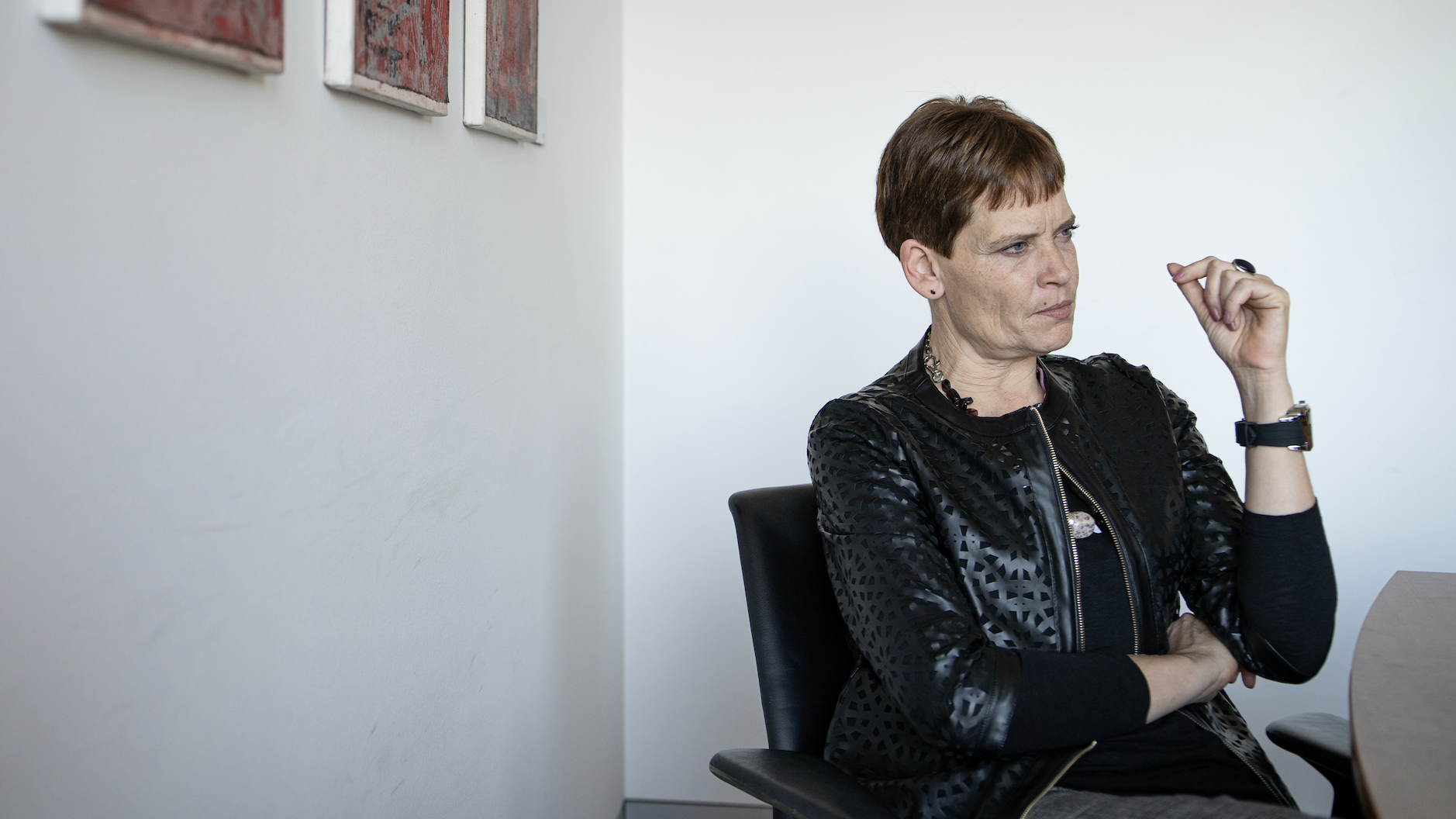Bridges before bullets
editor
While defense dominates headlines amid uncertain U.S. commitments, Ukraine’s reconstruction represents both a moral imperative and strategic opportunity, reminding us that true security is built not just with arms, but with roads, schools, and bridges.
Tine Kračun
The week began on the Adriatic coast, in Opatija, where Slovenia’s Delo and Croatia’s Jutarnji list convened a conference on infrastructure investment. It concluded high in the Julian Alps, in Planica, with a conference on Ukraine’s reconstruction—an event we at ISR co-hosted with SPIRIT Slovenia and the Ukrainian Embassy in Ljubljana. Though geographically distinct, the themes of both gatherings converged: the essential role of public investment in infrastructure as a potent engine of economic growth. Construction projects, after all, yield a far greater multiplier effect on GDP than defence spending, which—while at times necessary—delivers modest economic returns.
And yet, the global conversation remains fixated on rearmament. But understandably so. Europe must remain vigilant in the face of real and potential threats to its security and stability. The evolving posture of U.S. foreign policy has left the continent in a kind of strategic limbo. Since the Second World War, the United States has been Europe’s chief guarantor of peace—a transatlantic anchor that allowed European nations to pursue economic integration, keep defence budgets lean, and trust in a broader security umbrella. That model, though not without critics, helped preserve peace on a continent historically prone to conflict whenever arms races took hold. But with America’s commitment now less certain, Europe faces difficult choices.
The urgency, however, lies not in rearmament alone, but in securing peace in Ukraine. Sooner rather than later, a settlement must be reached—one that not only halts the violence but ensures long-term stability for Ukraine and the wider region. Rebuilding Ukraine is not merely a moral imperative; it is a strategic one. It is also an opportunity for countries like Slovenia to play a meaningful role—not just by offering political support, but through tangible engagement in reconstruction efforts that lay the foundation for a more resilient Europe.
Security, ultimately, is not just built with arms—but with roads, schools, hospitals, and bridges.
Partnerships for Ukraine’s future
editor
As the EU mobilises billions for Ukraine, a small Alpine nation makes its case for impact beyond size.
The Adriatic Team
It is not every day that the quiet valley of Planica, better known for ski jumping feats than strategic dialogue, becomes the backdrop for high-stakes economic diplomacy. Yet yesterday, this Slovenian alpine enclave hosted over a hundred representatives from politics, business, and development institutions at a conference titled Ukraine’s Recovery: From Standing Strong to Moving Forward.
The question on the table: How can Slovenian businesses position themselves as reliable partners in one of the most ambitious reconstruction projects of the century?
The numbers alone are staggering. The projected cost of rebuilding Ukraine over the next decade exceeds €500 billion. For a country like Slovenia, whose economy is tightly integrated into the European Union and whose export capacity is modest by global standards, the challenge is clear: to transform niche capabilities into outsized impact.
“Recovery is not just a humanitarian necessity but also an economic opportunity,” said Tine Kračun, Director of the Institute for Strategic Solutions (ISR), which co-organised the event alongside SPIRIT Slovenia, the Slovenia’s Ministry of Economy, Tourism and Sport, and the Ukrainian Embassy in Slovenia.
Kračun pointed to energy and digital infrastructure as areas where Slovenian firms, particularly SMEs, could compete. But while opportunities exist, so do the risks, from on-the-ground insecurity to regulatory opacity and financing gaps.
That is why the Planica conference was less about grand declarations and more about granular strategy. Slovenian officials and business leaders sat down with Ukrainian counterparts and international financial institutions to map out practical entry points: from solar power plants and waste-to-energy facilities to water purification systems and modular housing.
Tanja Fajon, Slovenia’s Foreign Minister, emphasised that rebuilding Ukraine is not only a political necessity but a moral obligation. “True security means that people can return to their homes, rebuild their lives and have access to essential services such as healthcare and education,” she said. “The goal is not just to rebuild roads and buildings, but to restore hope.”
Ukraine’s government, for its part, signalled its readiness to receive investment. In a video address, First Deputy Prime Minister Yuliia Svyrydenko said: “This year we expect 2.7% GDP growth, and we’re also seeing positive investment momentum. Over the past three years we’ve shown that war is not an embargo on investment. Today, these are very tangible business opportunities.”
Financing and risk mitigation, the real deciders
If Ukrainian officials brought optimism, Slovenian firms came with questions, chief among them: How to navigate financial risk in a war-adjacent economy?
Here, multilateral institutions stepped in with reassurance and tools. The European Investment Bank (EIB), which manages the lion’s share of the EU’s €50 billion Ukraine Facility, is already funnelling funds into critical infrastructure and SME support. Simon Savšek, who heads the EIB’s office in Slovenia, said that, to-date, the bank has “co-financed the renovation of more than 300 hospitals, kindergartens, schools and social welfare facilities in 150 cities, and the modernisation of urban public transport in more than 20 locations.”
The European Bank for Reconstruction and Development (EBRD), meanwhile, has committed over €6 billion to keep Ukraine’s economy afloat. With a new capital injection of €4 billion approved by its governors, the bank expects to double its annual investments in Ukraine post-war, from €1.5 billion to €3 billion.
Closer to home, Slovenia’s SID Bank offers export credit insurance and direct financing solutions tailored for Ukrainian ventures. “SID Bank has €60 million in insurance limits, with priority sectors being infrastructure, energy, digitalisation, water treatment and demining,” said Gašper Jež, a financing specialist at SID. Tools include short- and medium-term risk coverage, project co-financing, and engagement with Ukrainian banks.
In short: the money is there. The challenge lies in packaging viable projects and matching them with risk-mitigation tools early.
Where Slovenia can compete
The Ukrainian reconstruction agenda is sprawling, ranging from rebuilding transport corridors and energy grids to digitising procurement and creating public-private partnerships. For smaller countries like Slovenia, this complexity can be a filter rather than a barrier.
“Companies that join early will be at a long-term advantage,” said Vira Savchenko, co-chair of the Recovery Committee at the European Business Association and CEO of BDO in Ukraine. She urged Slovenian companies to come to the July reconstruction summit in Rome with vetted proposals and financing plans in hand.
Slovenia’s niche capabilities may prove valuable in sectors such as satellite technologies, where firms like Vesolje-SI are already engaged. CEO Tomaž Rodič noted that “projects involving microsatellite technologies, also supported by the European Space Agency (ESA), are currently highly relevant.”
Agriculture is another area of alignment. “Ukraine has large areas of arable land that can be invested in,” said Andrej Tisnikar, project lead at Bijol.
From rubble to resilience
Innovation will also play a central role in how Ukraine rebuilds. British-Ukrainian cooperation offers a glimpse into this future, with joint ventures already transforming rubble from Russian missiles into low-carbon concrete through thermo-mechanical processing. “Ukraine’s lasting security and prosperity will ultimately depend on a strong, resilient and inclusive economy led by the private sector,” said Dr. Ruth Wiseman, representative of the British government.
Tomaž Mencin, Slovenia’s special envoy for Ukraine’s recovery, laid out the roadmap: establish a business club for Ukraine-focused enterprises, launch a digital matchmaking platform, and ensure strong Slovenian representation at upcoming events in Brussels and Rome. “These are concrete steps through which Slovenia can consolidate its role as a trusted partner in the recovery process.”
The takeaway from Planica was practical, Ukraine’s recovery is not a charity drive. It is a competitive, strategic, and deeply complex enterprise.
Slovenia, with its agile private sector and alignment with EU funding mechanisms, may not shape the entire narrative. But it can script a compelling subplot. One of a small nation punching above its weight in the reconstruction of a country fighting for its future.
More hydrogen, less CO2
editor
The adoption of hydrogen technologies is paving the way for Alpacem Cement’s gradual decarbonisation. As part of the next phase of its green transition, the company plans to capture, transport, and store CO2. This initiative could reduce Slovenia’s total CO2 emissions by around 5%, the company estimates.
Jan Tomše
Alpacem Cement, which years ago set a goal to become one of the first carbon-neutral cement plants with minimal environmental impact by 2035, sees hydrogen technologies as one of the strategies to achieve this ambition. Green hydrogen, produced from renewable energy sources, offers a sustainable solution to decarbonise production processes and freight transport.
“In the next four years, we will introduce green hydrogen production via water electrolysis. In the initial phase, this hydrogen will primarily fuel trucks delivering cement to customers. To support this, we established Slovenia’s first green hydrogen filling station in Anhovo in 2021, which we plan to upgrade further in the coming years,” the company explained.
Alpacem Cement is the only Slovenian cement plant participating in the regional North Adriatic Hydrogen Valley (NAHV) partnership, which is developing hydrogen infrastructure across the region. The partnership includes companies and government representatives from Slovenia, Croatia, and the Italian region of Friuli Venezia Giulia. As part of the European hydrogen ecosystem, NAHV represents a significant opportunity for regional development.
“Hydrogen is a valuable resource that enables companies to establish low-carbon production processes while reducing energy costs. Digitalisation is also a crucial component for realising a hydrogen economy,” says Aleksander Gerbec, the founder of Ecubes, a company that pioneered the hydrogen valley concept and has supported its development from the outset. According to Gerbec, global scientific consensus affirms that renewable and low-carbon hydrogen can drive economic and societal progress, enabling a sustainable transition while combating climate change.
“Currently, the development of the hydrogen ecosystem faces several challenges, two of which stand out: first, effective communication among all stakeholders across the value chain to ensure coordinated efforts, and second, overcoming technological hurdles, such as long-distance hydrogen transport, to bring down costs,” Gerbec notes. Renewable hydrogen, he adds, remains expensive due to the structure of the hydrogen valley, which connects 17 pilot projects that complement one another. However, these efforts are paving the way for abundant, affordable clean hydrogen in the North Adriatic region.
“In addition to higher purchase costs, operational expenses are elevated because our current hydrogen production costs range from €10 to €20 per kilogram. To achieve cost parity with diesel trucks at the operational level, production costs would need to drop to around €6 per kilogram, based on current fossil fuel prices.”
Thanks to substantial investments in infrastructure, Gerbec says the North Adriatic is emerging as a major European hub for hydrogen innovation and an attractive destination for young talent committed to addressing global climate and resource crises. This progress is enabling the creation of a transnational hydrogen ecosystem, supported by the EU’s regulatory framework.
Hydrogen tech remains expensive
For Slovenian businesses to adopt hydrogen technologies more widely, Alpacem Cement emphasises the need for additional financial incentives and co-financing of initial investments in hydrogen infrastructure and operational costs.
“At present, hydrogen use is not yet competitive with conventional, well-established fossil fuel-based solutions. A hydrogen fuel cell truck, for example, costs four times more than a conventional diesel truck used for cement delivery. Operational costs are also significantly higher,” the company explains.
How the state can help
Alpacem Cement advocates for targeted funding programmes specifically designed to support the adoption of hydrogen technologies. “On general funding calls for energy efficiency and emissions reduction projects, hydrogen technologies often struggle to compete with more established solutions, especially when assessed on cost-effectiveness,” the company notes.
They also highlight the challenge of obtaining permits for infrastructure, which can hinder access to funding. “Practice shows that investors can only finalise project financing and commit to implementation after successfully securing subsidies. Relaxing these requirements could make a significant difference,” they suggest.
The adoption of hydrogen technologies is just one aspect of Alpacem’s green transition. Alongside hydrogen, the company is incorporating alternative fuels, solar power plants, waste heat recovery for electricity production, and alternative raw materials. In the second phase of its green transition, Alpacem plans to capture CO2 and either store it or repurpose it when feasible. Combined, these initiatives could reduce Slovenia’s total CO2 emissions by approximately 5%, the company concludes.
Where scars became a seam
editor
Split by Cold War politics, Gorizia and Nova Gorica are being reunited by a generation that refuses to inherit old divisions.
Andraž Tavčar
On 15 September, 1947, a stark line of barbed wire sliced through the heart of Gorizia, as the Treaty of Paris between Italy and Yugoslavia split what had once been a single community in two.
Few residents believed the division would actually materialise until it became their new reality overnight. The hastily drawn border paid no heed to property lines or daily life, cutting through neighbourhoods and even bisecting the local cemetery, where families could visit their deceased loved ones only twice a month. Under cover of darkness, young men would move border markers in protest, prompting Allied troops to erect barbed wire fences and establish guard posts.
Yugoslavia’s response to losing Gorizia was audacious. In 1948, it mobilised more than 5,000 workers, mostly young Slovenians, to build what was initially conceived as a substitute for the lost territory. What began as merely an extension of the old would evolve into Nova Gorica, a distinct city with its own character, a mirror image that refused to be merely a reflection.
Now these sister cities are writing a new chapter in European history. In 2025, they will become the first cross-border communities to share the prestigious European Capital of Culture designation. “When we proposed this joint bid in 2017, we knew we were reaching for the impossible,” says Rodolfo Ziberna, Gorizia’s mayor.
The designation, created in 1985 to celebrate European cultural diversity, has transformed more than 40 cities, often catalysing urban renewal and drawing international attention to lesser-known regions. For these border cities, it represents something more profound: a formal recognition of their quiet transformation from divided communities to partners in cultural innovation.
Tourism will likely surge, but local leaders are looking beyond 2025. They envision a future where visitors come not just for historical landmarks but for a unique cultural fusion where Slovenian and Italian influences merge seamlessly.
The real story, however, lies in the generational shift. While older residents can still recount tales of division, younger generations move freely between the cities, populating cafes and bars on both sides. “Young people view this as history,” observes Samo Turel, mayor of Nova Gorica. “They don’t look at these questions through an ideological prism.”
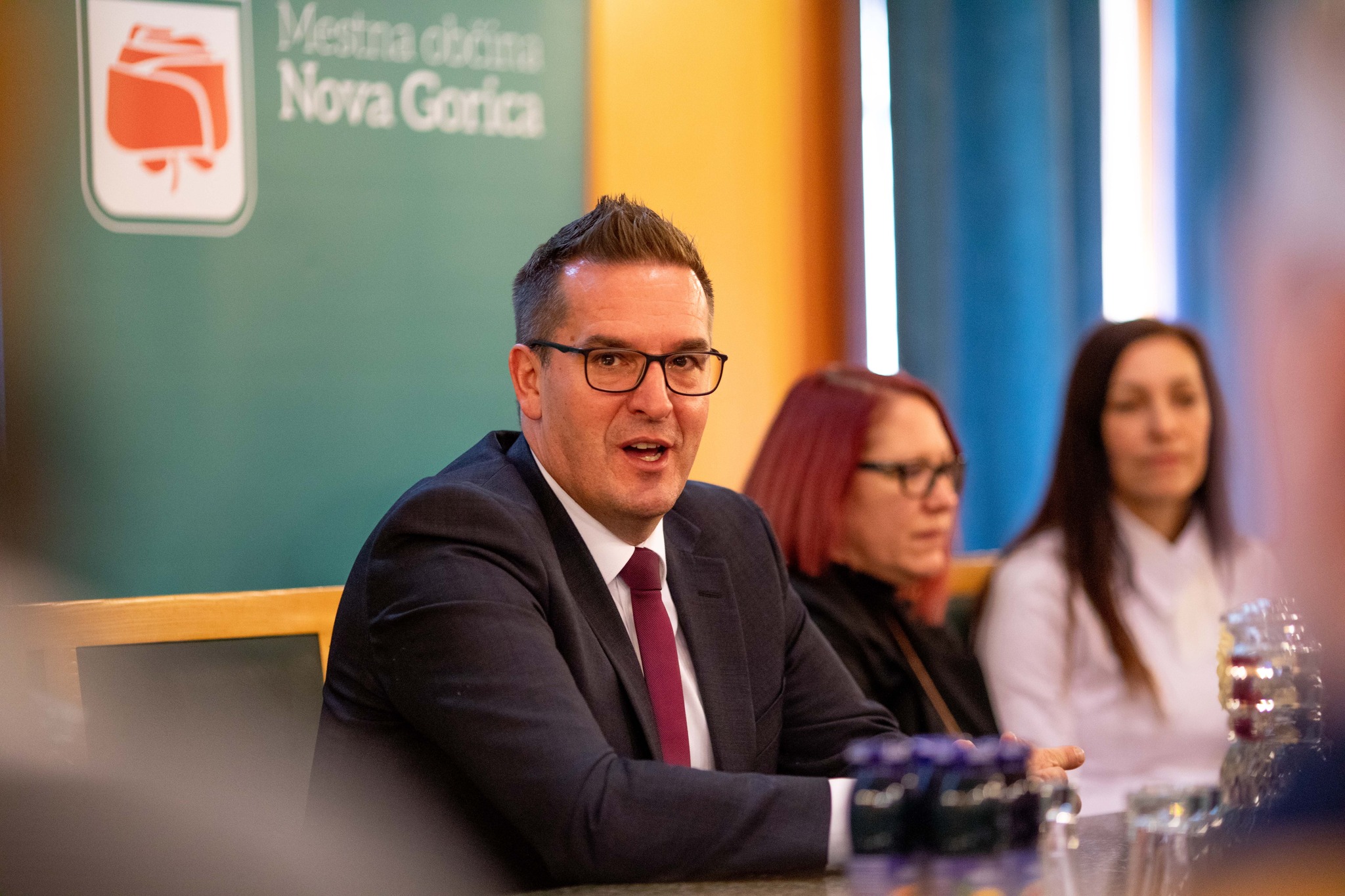
Perhaps nowhere is this evolution more evident than in the changing patterns of language and education. While Mr Turel’s generation learned Italian from television and cartoons, today’s youth often communicate in English. More striking still is the growing number of Italian families choosing Slovenian-language schools in Gorizia, drawn by both the quality of education and the recognition that bilingualism represents an asset in modern Europe.
The influence of young people extends far beyond cultural exchange. “They are the driving force behind many initiatives submitted to our European Grouping of Territorial Cooperation’s Small Project Fund,” says Mr Ziberna. “When we develop policies for green spaces, environmental protection, universities, or industrial development, we do so with their perspectives in mind.”
Yet both cities face modern challenges. Young residents are leaving for opportunities elsewhere, and Nova Gorica struggles with a housing shortage as real estate prices soar. The University of Nova Gorica, founded through a partnership with the prestigious Jožef Stefan Institute, might offer a solution. Currently based in nearby Vipava, it plans to expand across both cities, potentially revitalising their urban cores.
The cities are also reinventing their economies, courting high-tech companies as traditional retail sectors decline. Via Rastello in Gorizia, once a bustling shopping street, now stands as a quiet reminder of changing times.
Luckily, the cooperation between the two municipalities is thoroughly practical. Nova Gorica already supplies drinking water to its Italian neighbor, and the mayors are discussing ways to share urban planning and infrastructure. With a combined population of around 60,000 residents, the two are questioning the necessity of duplicate facilities – from stadiums to swimming pools – on both sides of the border. The future, Mr Turel believes, lies in joint planning that would bring their communities even closer through shared infrastructure.
“What we want to communicate through our Cultural Capital programme is that while we acknowledge our history, we’re focused on addressing current challenges,” he explains. “Our gaze is firmly fixed on the future. This vision was recognized in our selection, and it’s what drives us forward.”
What started as a cultural partnership has evolved into a blueprint for cross-border cooperation. While older residents carry memories of division – each with a grandparent’s story of past tragedies – younger generations see only possibilities. “Let historians handle history,” Mr Turel says. “My children’s generation sees things completely differently from their grandparents. This is the only way forward: leaving the past to history and building a shared future together.”
Generation Alpha has arrived, with money to spend
editor
The children born after 2010 are skipping the childhood ritual of hoarding pocket change and heading straight to digital entrepreneurship. Some before they’ve even learned to tie their shoes.
Andraž Tavčar
The ritual will be familiar to anyone over 30: squirreling away our allowance for that perfect pair of designer jeans, coveted video game, or must-have accessory. We’d count our savings daily, and when falling just short of our goal, make impassioned pleas to our parents to help bridge the gap. The eventual acquisition of these prized gifts made the anticipation worthwhile, particularly when showcasing them in front of our envious friends.
For Generation Alpha – those born between 2010 and 2025 – this rite of passage is fading into obscurity. Born at a rate of 2.5 million per week globally, the new cohort of young adults is projected to wield $5.46 trillion in spending power by 2029, rivaling the combined economic might of Millennials and Gen Z. While my generation relied largely on allowances, they have embraced entrepreneurship, finding different ways to earn money that no longer depends on washing the dishes or vaccuming.
Before even starting high school, Generation Alpha has already reached a level of digital proficiency that puts my 9-year-old self to shame. Especially when I thought turning off my computer by pressing the power button was perfectly fine. By age seven, they’re developing financial habits; by fourteen, physical cash is largely alien to them, with nearly two-thirds already generating income through digital platforms. Research shows that three-quarters of their earning activities take place through social media and online marketplaces.
Traditional education hasn’t kept pace with this evolution. Financial literacy still remains as peripheral in current curricula as it was in my day. While my parents struggled to explain budgeting and taxes, nearly a third of Generation Alpha now gets their financial education directly via finance apps. They’re breaking free from the hierarchical structures – parents, teachers, traditional institutions – that guided previous generations, emerging more independent and with a wealth of knowledge that’s always just a few taps away.
We can already observe this shift in Slovenia, where 77% of children aged 8-14 now see themselves as future entrepreneurs – not wage-earners or professionals in the traditional sense, but commanding multiple revenue streams.
The very notion of a “career” – that 20th-century construct of stable, linear progression – is becoming antiquated, with just 9% expressing interest in traditional employment in a country where self-employment currently hovers at 11%.
Generation Alpha will want jobs in sectors like cyber-security, app development and more nascent fields like crypto and artificial intelligence. Unlike their parents who might have stayed in one industry for life, they’ll be lifelong learners, moving between multiple sectors. Their success will depend on their ability to constantly adapt, upskill, and retrain to remain relevant in an ever-evolving workplace.
Growing up with a fount of technology at their beck and call has set the bar for what they’ll expect from digital services in the future. Their early adoption of technology has enabled them unprecedented access to answering whichever query at any given moment. Were a company’s authentication process lagging or its chatbot hallucinating, it’s unlikely Alpha would have the patience to bear the haphazardly implemented digital solutions that were foisted on us. There will be many unknown unknowns businesses will have to contend with as their customers will come to expect proactive solutions that respond to their needs before they even arise.
Visa executives like Alenka Mejač Krassnig see an inevitable upheaval coming in financial services. After implementing contactless payments on Ljubljana’s bus system, she’s witnessed firsthand how readily young people embrace digital solutions. “We’re going to see these changes happen faster than anyone expects,” she says. “Companies that want to stay competitive need to understand what this generation wants – seamless, frictionless experiences in everything they do.”
This means addressing what the company calls “payment pain points” – the friction in digital transactions that Alpha consumers will neither experience nor tolerate.
The company has launched over 250 products and services, from enhanced security measures to seamless payment integrations. More significantly, two-thirds of these initiatives focus on helping traditional financial institutions expand into digital territories, meeting young consumers where they already are.
But Generation Alpha’s expectations extend even further. “A bank card, written to my fingerprint,” reads one of the responses from several children that Visa interviewed about their expectations of future innovations. Increasingly, when in stores, we pull out our phones rather than our wallets. We bring them close to the devices at the checkout, press it against the screen and wait for that green checkmark. Visa is embracing this evolution by testing palm recognition technology in select markets.
The path to this point hasn’t been straightforward. Over the past decade, various biometric authentication methods have been integrated into payment systems, with fingerprint and facial recognition becoming essential features of mobile wallet solutions like Google Wallet and Apple Pay. While other methods like iris and voice scanning have been explored but gained less adoption, biometric authentication has become a cornerstone of secure mobile payments. Palm recognition now shows promise in further enhancing this landscape with its seamless user experience.
While many consumers might approach this technology with initial skepticism – much as they did with mobile wallets – Generation Alpha will likely view it differently. For them, swiping their palm across a terminal will come as naturally as breathing.
Addressing demographic challenges with tailored solutions
editor
Demographic change, such as ageing populations, increasing uncertainty among the youth, and changing lifestyles, pose new challenges for financial institutions. These changes require adaptable and innovative solutions that meet the needs of different generations.
Maja Dragović
In the Adriatic region, leading insurance companies like Triglav Group are developing comprehensive solutions to manage these challenges, ensuring stability and security for all generations. By collaborating with banks, these solutions are integrated into banking services, enabling a holistic approach to address demographic challenges. This ensures that the needs of clients from all age groups are met in a way that takes into account the specific challenges and opportunities of each generation.
Insurance companies offer a wide range of solutions that provide financial protection for individuals, families, and businesses. Banks integrate these solutions into their service offerings, such as when granting loans, allowing clients access to additional protection in case of unforeseen events. With investment insurance that combines savings and protection against risks like accidents, illness, or death, clients gain long-term financial benefits and security. These products not only help clients save for the future but also protect against life’s risks, which can arise at any time.
How to ensure a comfortable life during retirement
With the rise in life expectancy and the greater demand for healthcare and long-term care, it is increasingly important for older individuals to be financially protected and have access to quality care. Greater emphasis is being placed on products such as pension savings, investment insurance, and lifetime annuities, which allow individuals to save for retirement and ensure a stable monthly income in later years. These products encourage younger generations to start saving early, as they can build savings during their working years, when their incomes are higher, providing greater financial stability after retirement when their incomes are lower. Through investment insurance enabling long-term savings and annuities providing stable income in old age, Triglav offers the older generations a better quality of life and helps them reduce the financial burden associated with long-term care or living in a retirement home.
For the elderly facing financial burden without savings, solutions are available to provide access to financial assistance in case of unforeseen events. Insurance companies in the Adriatic region have developed collective insurance products that banks offer to their clients. This enables clients to be protected if they are unable to meet their loan obligations due to difficult life circumstances, such as serious illness or an accident. Such protection is crucial, as it ensures financial security during times when individuals are most vulnerable, helping to reduce financial uncertainty in these situations.

Security for all generations
The effects of demographic changes are most apparent in the shifting age structure of the population. The proportion of older individuals is rising, while the younger, active population face significant uncertainty due to low birth rates, housing challenges, and salary burdens that support an increasingly inactive population. These changes affect young people’s decisions regarding family planning, investments, or property purchases, as they feel they are confronting challenges that are becoming progressively harder to address. In this context, insurance companies and banks offer solutions that provide protection for both younger and older generations.
In Triglav Group, they address the security challenges of the active population with solutions designed to deliver comprehensive financial protection for the entire family. Insurance products offering financial coverage in the event of death, accidents, serious illness, or permanent disability enable individuals to safeguard against the consequences of unforeseen life events that could threaten their standard of living. These products include coverage for medical expenses, long-term care, home adjustments, and income replacement, helping to maintain financial stability and alleviate stress during unexpected situations.

Tailored investments
Additionally, it is important that investments and savings are tailored to the individual’s needs through different life stages. Investment funds with insurance components enable clients to diversify their investments and protect themselves against life risks, such as disability or death. These products are particularly appealing to younger generations who aim to save long-term while also safeguarding their financial future. For older generations, products offering stable returns and security through insurance coverage and long-term annuities are more suitable.
Collaboration between financial institutions such as insurance companies, banks, and fund managers promote economic growth, strengthens trust in the region, and creates a foundation for a better quality of life. Tailored solutions that encourage long-term saving, provide financial security during challenging times, and help reduce uncertainty among both younger and older generations demonstrate that financial institutions are prepared for future challenges and committed to sustainable growth and stability in the Adriatic region.
Post of Slovenia's dialect-aware AI
editor
In a breakthrough for customer service technology, Slovenia’s national postal service has unveiled an AI assistant that can chat with customers in 12 different Slovenian dialects – a first for the country’s AI landscape.
The Adriatic Team
Voice assistants have become increasingly sophisticated since their mainstream debut in the early 2010s, yet most have struggled with one persistent challenge: understanding regional accents and dialects. While major players like Alexa and Google Assistant have made strides in recognising various English accents, from Scottish to Australian, the development of AI assistants for smaller language markets has lagged behind, often forcing users to adapt their speech to standard language variants.
This challenge is particularly acute in countries like Slovenia, who boast rich dialectal variations, and where standard language forms may feel formal or unnatural in everyday communication. Traditional voice recognition systems typically work with standardised language models, and research shows these consistently struggle with various forms of speech diversity, be it regional accents, code-switching, and speech variations related to gender, age, or ability. In essence, if you don’t sound like the voices these systems were trained on, you’re more likely to face difficulties being understood.
As AI voice recognition systems become more prevalent in critical services, from healthcare and education to emergency response and law enforcement, these limitations can have serious consequences. Imagine trying to reach emergency services during a crisis, only to have an AI repeatedly fail to understand your accent or dialect.
Post of Slovenia breaks new ground with Pia
Short for Postal Interactive Assistant, Pia moves well beyond the robotic responses of traditional automated systems. Instead of forcing customers to adapt to rigid command structures, it engages in natural conversation while understanding the specifics of Slovenia’s regional accents and expressions.
Launched at the postal service’s Maribor headquarters on February 10, 2025, Pia will be able to redistribute some of the workload from the service’s 2,300 daily calls, handling customer inquiries through multiple channels: voice calls to 080 14 00, SMS messages, chat, and even Viber.
“With the introduction of this innovative solution like Pia, we want to offer our customers the best possible experience and enable them to obtain desired information even faster,” explains Vanja Belec, Head of Customer Care at Post of Slovenia. “We believe this technology will help improve the efficiency of our contact center and customer satisfaction, though we emphasise that this is artificial intelligence that is constantly learning and improving.”
Pia is integrated directly with Post of Slovenia’s internal systems and knowledge base, pulling accurate information in real-time while maintaining natural dialogue. Coming soon, customers will also be able to interact with Pia through Post of Slovenia’s mobile package tracking app.
This marks a significant shift in how public services approach automation. Rather than implementing a one-size-fits-all solution, Post of Slovenia has prioritised local linguistic diversity, developing an AI assistant that understands and responds appropriately whether a customer is speaking in the dialect of Ljubljana, Maribor, or any of Slovenia’s other distinct regional variants.
“This isn’t just a technological innovation – it’s the future that combines advanced artificial intelligence with a human approach,” says Marko Cegnar, General Director of Post of Slovenia. “It enables natural and intuitive communication, simplifies everyday work processes, and opens new opportunities for further enhancement of the user experience.”
By building an AI that embraces rather than flattens linguistic diversity, Post of Slovenia has taken a notable step forward in making automated customer service more accessible and user-friendly, demonstrating how AI solutions can be tailored to specific cultural contexts.
Its implementation could and should serve as a template for similar organisations grappling with linguistic diversity in their customer base, showing how technology can enhance and adapt to our needs, instead of forcing us to change them.
European companies face severe talent crunch
editor
Slovenian and Croatian companies will face severe labour shortages for at least another five to ten years, with demographic challenges, educational mismatches, and shifting workforce expectations exacerbating the crisis, according to experts at a ISR’s regional business forum in Zagreb.
The Adriatic Team
The event, titled Planning Economic Success in an Era of Polycrisis and Demographic Challenges, was organised by Slovenia’s Institute for Strategic Solutions (ISR) alongside the Slovenian Embassy in Zagreb and the SLO-CRO Economic Chamber. Speakers highlighted how geopolitical shifts, technological advancements, and evolving labor dynamics are reshaping corporate strategies and regional economic stability.
Around 80% of job postings in Slovenia and Croatia target workers with less than a fifth-level education (typically vocational training), yet nearly all younger generations in both countries pursue university degrees, creating a stark mismatch. “The situation is extreme and will remain so for at least five years, barring a major crisis,” said Tilen Prah, Director of recruitment firm Kariera.
Prah noted that young workers increasingly face a dilemma: emigrate for better opportunities or stay home but hit career ceilings due to tax policies that disincentivise higher earnings. “Employees most often leave due to poor workplace relationships, inadequate management, and poor labour organisation. Dissatisfaction with pay and unfulfilling work follow,” he added.
Business leaders say the rules of hiring have changed, as young workers begin to want more than just a stable paycheck. They’re looking for jobs that offer room to grow, meaningful work, and the freedom to shape their own careers.
“Today’s workforce has completely different priorities,” one executive noted. “We can’t keep running our companies the way we did a decade ago. The new generation wants to know not just what they’ll be doing, but why it matters and how they can make their mark.”
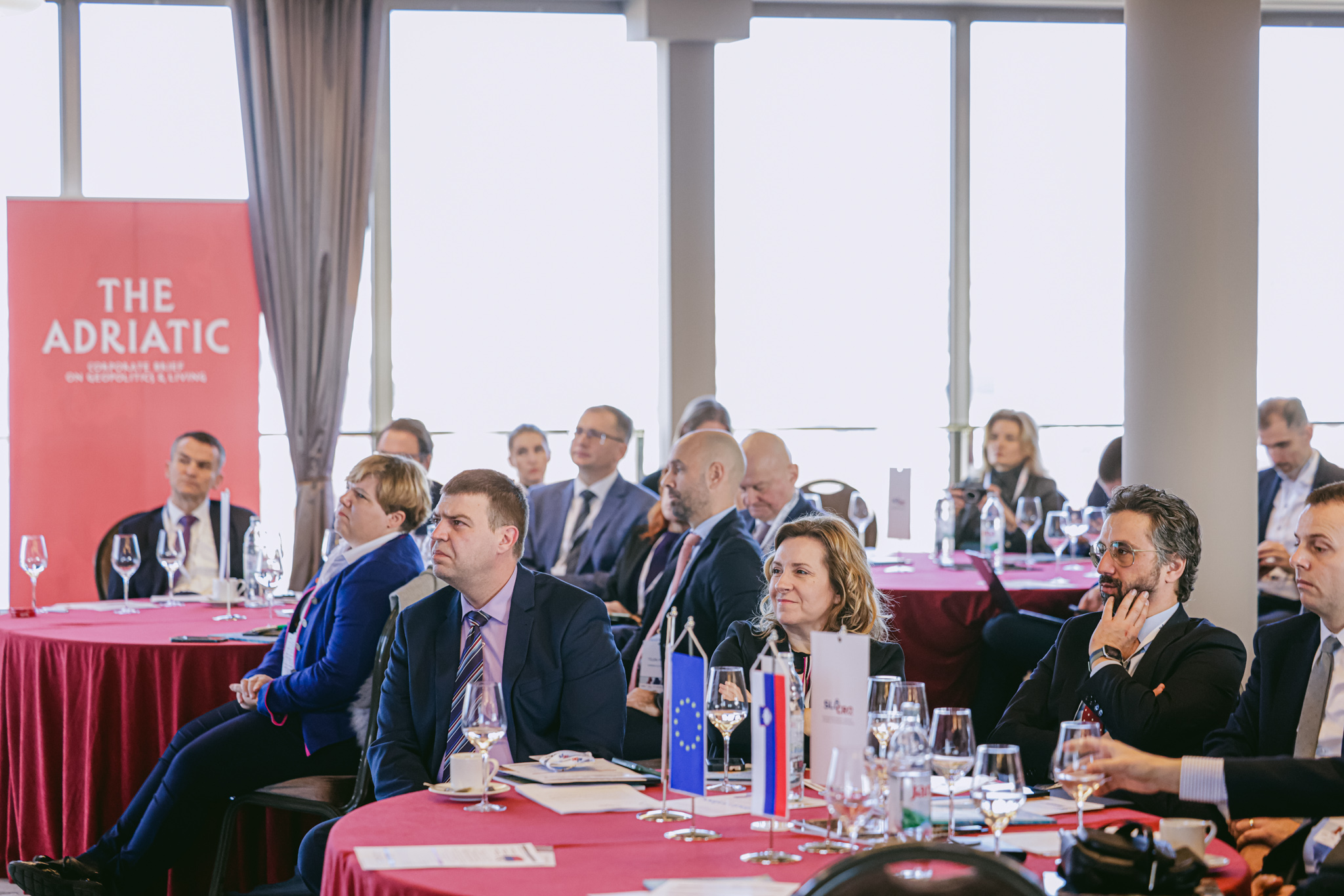
A crisis of confidence
The labour crisis is compounded by a broader erosion of trust in institutions. A study cited by Velimir Srića, a Croatian management and IT consultant, found that 40% of CEOs believe their companies won’t survive without significant changes – yet two-thirds aren’t ready to make those shifts.
According to Srića, the region is witnessing institutional disruption, with people losing faith in family, the state, entrepreneurs, media, science, religion, and the nation.
The old way of doing things just doesn’t seem to cut it anymore. He contrasted traditional MBA programs, which he claimed deliver 11% profit growth, with entrepreneurial training focused on mindset changes, which he said boosts profits by 30%. Today’s leaders need faster reaction times and a departure from traditional decision-making, he argued.
The benefits and pitfalls of (excessive) regulation
The forum also touched on the dual role of regulation: safety net or innovation killer?
Ante Žigman, Head of Croatia’s Financial Supervisory Agency (HANFA), stressed that robust oversight ensures market stability and consumer protection, pointing to cryptocurrency volatility as a cautionary tale. He argued that without sufficient regulation, high risk and price swings encourage reckless behavior.
However, Gorazd Čibej, Director of Slovenia’s Insurance Supervision Agency, warned that excessive EU regulations – 21,000 currently apply in Slovenia alone – risk stifling innovation.
Stjepan Orešković, entrepreneur and majority owner of Bosqar Invest, echoed concerns about the EU’s lag behind the U.S. in scaling up startups. Citing a report by former Italian Prime Minister Mario Draghi, he urged the EU to create an ecosystem supporting 500 high-growth firms shielded from foreign takeovers.
Companies are looking for adaptability
Ivana Vrviščar, board member at the Slovenian postal service, explained that their company follows a strategy enabling a modern approach to talent acquisition. “We recognise that new generations have completely different expectations. We focus heavily on mentoring programmes and integrating new employees into our processes and company culture.”
Telemach CEO Adrian Ježina noted that their company now experiences significantly higher staff turnover compared to a decade ago. They’ve made employee satisfaction a key priority, which has proven to be a successful strategy. “We’re looking for talented professionals who truly master their field,” he explained. “We particularly value those who show an entrepreneurial spirit and approach their work as if they were running their own business.”
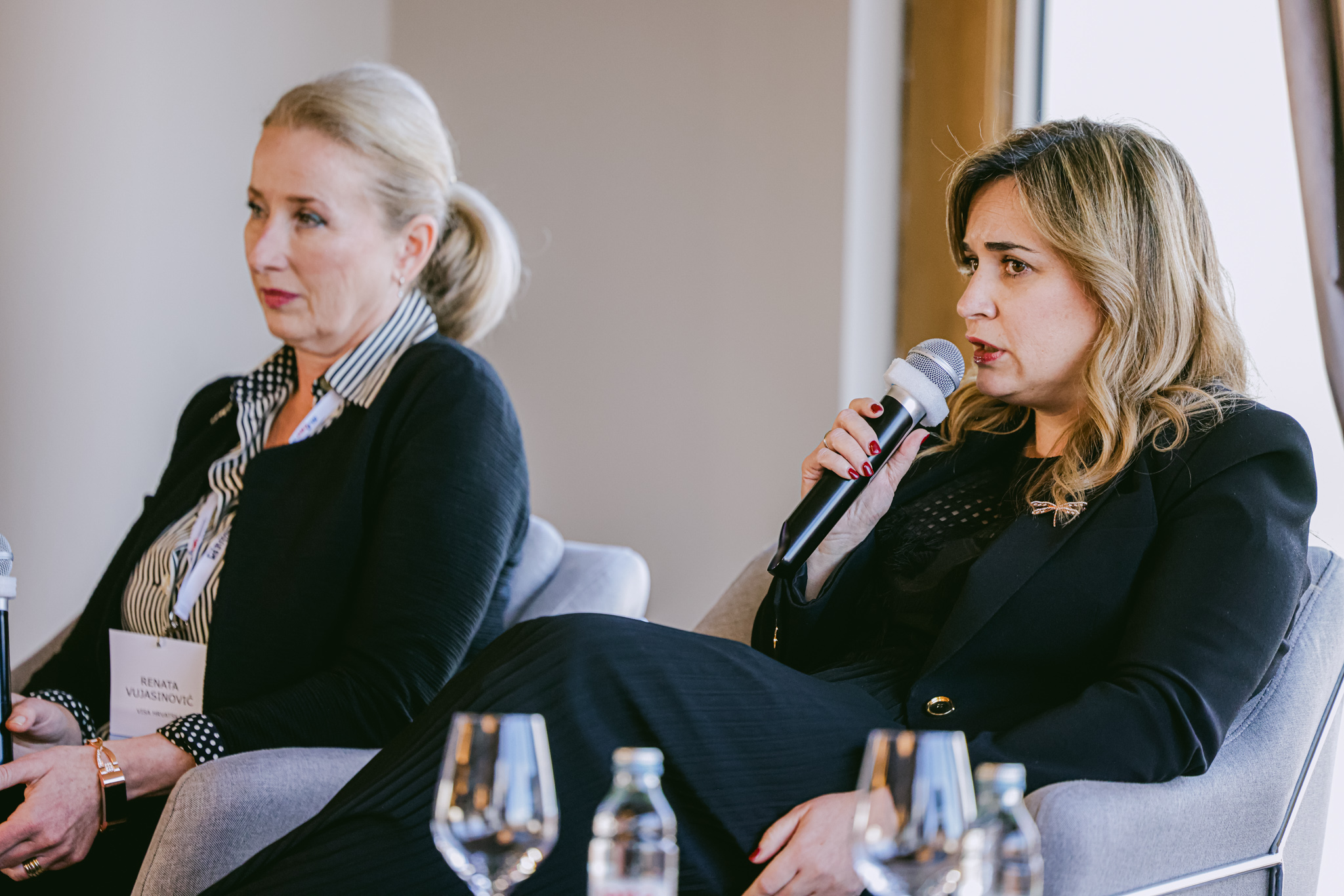
The business landscape demands increasingly versatile employees, according to Vilma Učeta Duzlevska, CEO of Triglav Insurance Croatia. “We look for people who can adapt to rapid changes and strategies, as volatility is now a fundamental part of today’s business world,” she explained. Digital savvy is a must, she notes, but so is taking initiative – more often than not, just one motivated employee can uplift an entire team.
For digitally transformed companies, finding quality talent remains a major challenge, according to Renata Vujasinović, Country Director of Visa Croatia. She believes satisfied and goal-oriented employees make the best company ambassadors. “It’s crucial to strengthen teamwork while building a culture where success is both recognized and valued,” Vujasinović said. “But we must also ensure our expectations remain realistic.”
The new playbook for acquiring talent
Regional executives are having to navigate complex workforce dynamics, with traditional retention strategies showing diminishing returns.
At Triglav Insurance, Miss Učeta Duzlevska emphasises organizational culture shifts. “Creating a business culture that encourages education and new skills is essential,” she notes, pointing to a combination of financial and non-financial incentives as critical tools.
The challenges extend beyond compensation packages. Miss Vujasinović identifies a fundamental misalignment between corporate structures and workforce expectations. “Most young people today see themselves as future business owners,” highlighting a growing tension in traditional career development models.
Even state-affiliated institutions are adapting. Miss Vrviščar, from Slovenia’s postal service, describes the pressure on large organisations to attract talent capable of handling increased responsibility. The company’s recent AI agent trial for customer service operations is but the first step on the road to broader transformation efforts across traditional sectors.
Aligning strategy with global opportunities
editor
SPIRIT Slovenia, the public business development agency responsible for attracting FDI to the country and helping Slovenian businesses expand abroad, continues to shape a forward-looking strategy to promote Slovenia’s economic competitiveness, innovation, and sustainability.
The Adriatic Team
SPIRIT Slovenia’s current strategic priorities rest on three pillars: competitiveness, innovation, and sustainability. The agency is dedicated to helping local businesses expand their international presence while attracting foreign investment. Collaboration is essential, as the agency works closely with various stakeholders to provide comprehensive support for entrepreneurs, especially in sectors that align with Slovenia’s development goals.
To stay relevant in a rapidly evolving global economy, the agency has adopted a proactive approach to adapting its strategies. SPIRIT Slovenia engages actively with businesses to understand their evolving needs and annually assesses interest in participating in international trade fairs and business delegations. In 2025, the agency will focus on a healthcare tradeshow in Dubai, a defence tradeshow in Abu Dhabi, connectivity in Barcelona, as well as exploring opportunities in the U.S. space industry and Germany’s logistics and food sectors. The agency has also set its sights on Asian markets, including China, Japan, and Vietnam, with EXPO Osaka being the key project for 2025.
Further expanding global outreach, SPIRIT Slovenia recognizes the importance of combining business and sports. The agency plans to host North Macedonian businesses and follow up with a Chinese delegation in the context of business events during the Ski Jumping World Cup Finals in Planica.
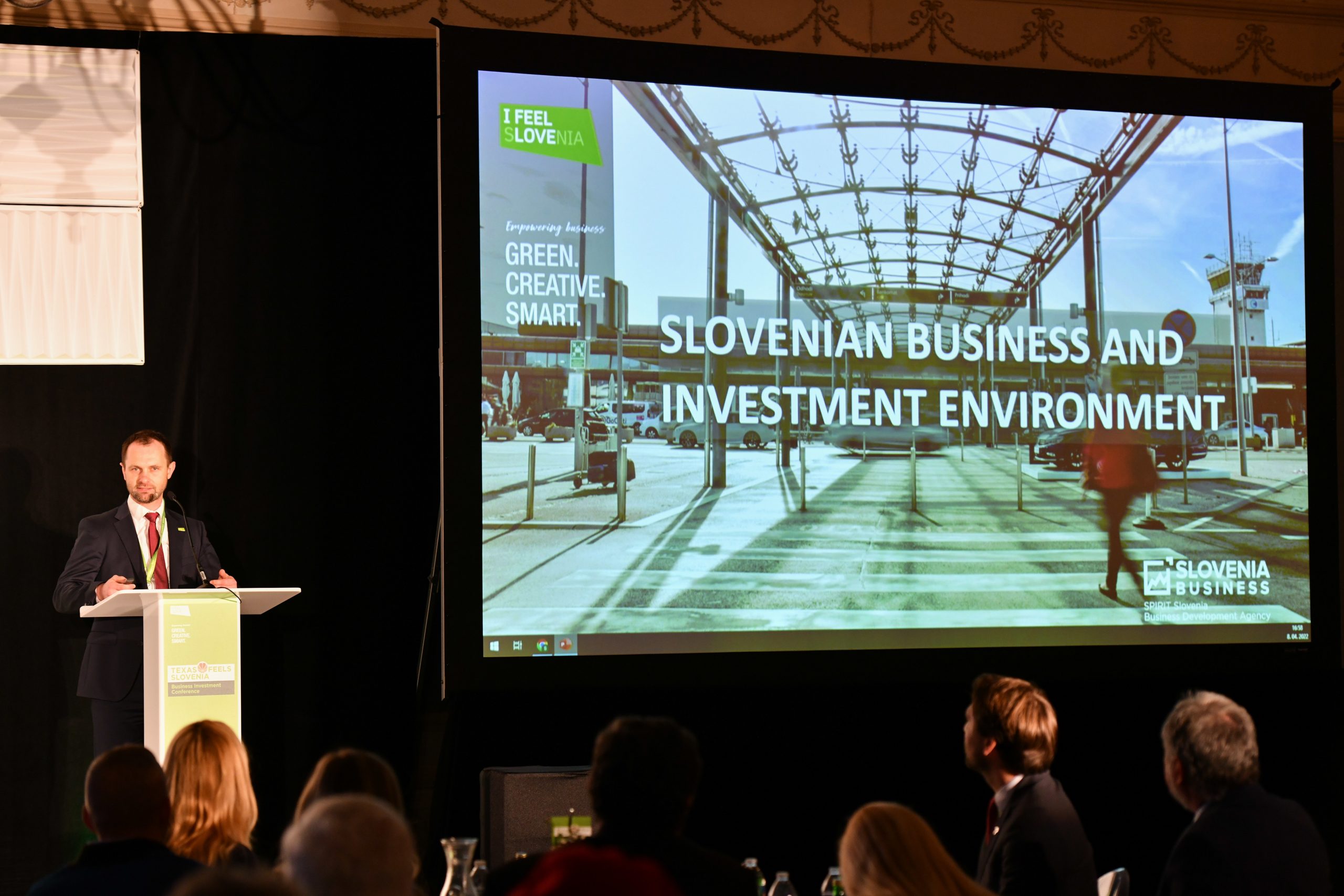
Regional growth
SPIRIT Slovenia is expanding its efforts to help Slovenian companies in the Adriatic region. New networking initiatives and business delegations are in development, and preparations are underway for EXPO in Belgrade in 2027. Business clubs in Croatia, Serbia, and the newly established one in North Macedonia are being leveraged to build deeper connections between Slovenian firms and regional partners.
The push to strengthen regional ties comes amid a decade of growing economic trade between Slovenia and its Adriatic neighbours. This growth reflects a more robust exchange of goods compared to 10-15 years ago, when trade primarily relied on traditional sectors. Technology, logistics, and sustainability now dominate cross-border trade, bolstered by improved infrastructure at the Port of Koper, which has made trade operations smoother and more efficient.
Despite the strong economic relationship, there remains room for improvement. Whilst Italy and Croatia dominate in trade and investment volumes, Bosnia and Herzegovina and Montenegro have balanced, though smaller, economic exchanges with Slovenia. Albania shows the weakest economic relationship but also the most potential for future growth. Trade volumes typically exceed investment levels, though Montenegro stands out where investment outpaces trade. This shift indicates growing recognition of Slovenia as a strategic business partner.
There is also untapped export potential in the region, particularly in medicaments, electrical energy, and motor vehicles. Medicaments consistently show the largest untapped potential in absolute value terms, underlining the importance of these sectors in further boosting Slovenia’s regional trade footprint. This aligns closely with the country’s broader strategy to attract foreign investment in high-value sectors.
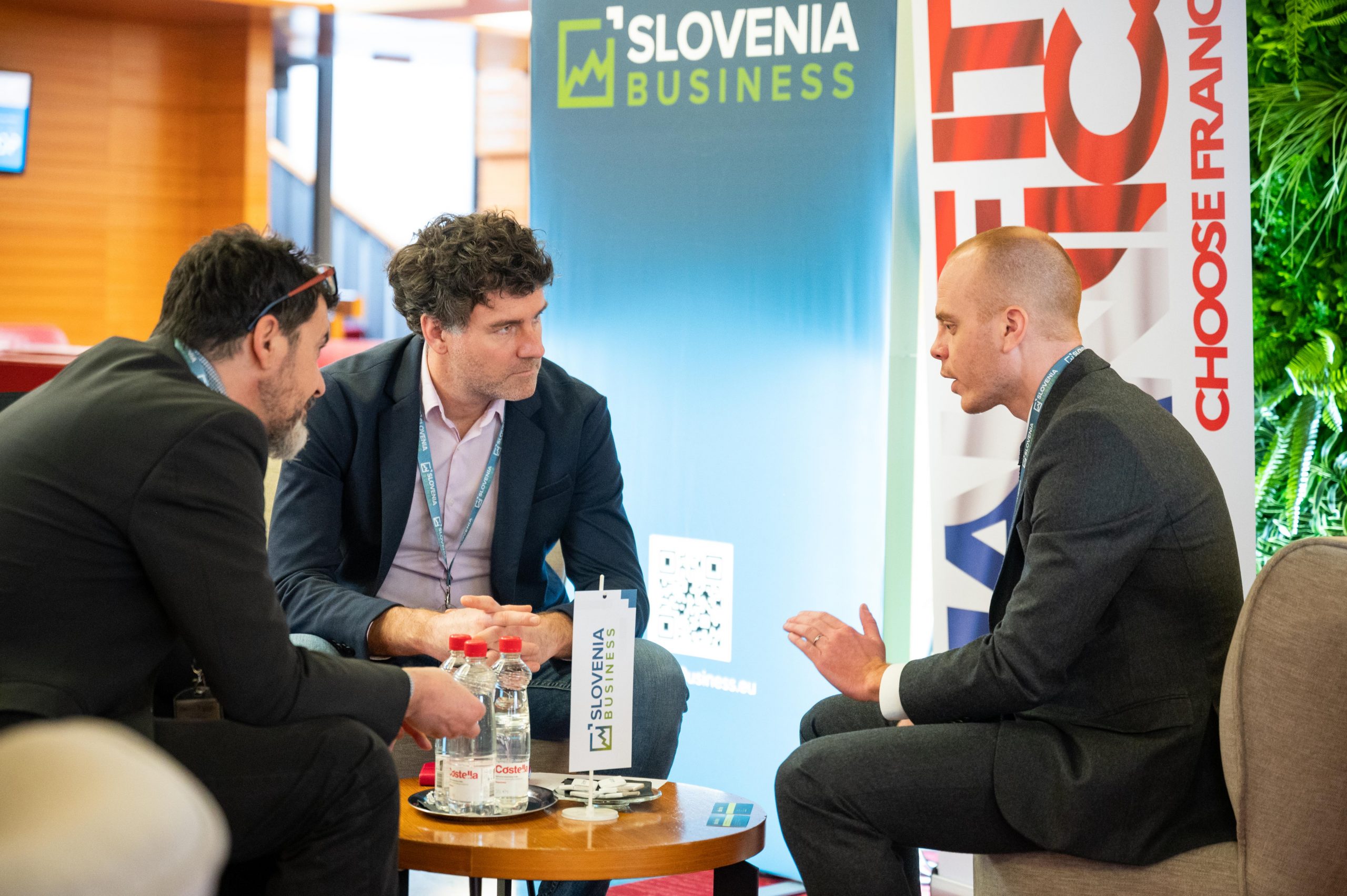
Key sectors
According to the government’s Programme for the Promotion of Investments and Internationalisation, five key sectors are set to drive Slovenia’s economic growth: advanced automotive and mobility, electronic equipment manufacturing, smart and sustainable technologies, wood industry innovations, and sustainable tourism. The agency is targeting investors whose projects not only exceed the national average in added value but also positively impact the economic ecosystem, enhance workforce skills, and promote balanced regional development.
Slovenia’s push towards smart manufacturing and sustainability in these sectors is a key differentiator in its investment strategy. According to recent data, 32.8% of foreign direct investment (FDI) in Slovenia is in the manufacturing sector, including automotive parts and electronics. Financial and insurance activities account for 20.6% of FDI, whilst wholesale and retail trade (including vehicle repairs) represents 19% of Slovenia’s foreign investment.
This focus on manufacturing and sustainability is complemented by various investment incentives that make Slovenia an appealing choice for foreign investors. These include a favourable corporate tax rate of just 19%, one of the lowest in the European Union. With additional deductions for research and development, machinery investments, and strategic employment, the effective tax rate can be as low as 13%. Municipal incentives and grants for large-scale projects further enhance the appeal for foreign investors, with grants available for projects exceeding EUR 12 million in manufacturing and EUR 3 million for service or R&D projects.
Strength under pressure
editor
Jan Tomše
“Where will we find researchers, doctors, IT staff, teachers, and social welfare professionals if our generations are becoming increasingly modest?” asks Vesna Vodopivec, Assistant to the Management Board and acting head of HR at NLB, the largest financial group with headquarters in Southeastern Europe, in an interview with The Adriatic. As the region aligns closer to the West, adopting more Western characteristics, the question of retaining young talent and growing human capital becomes ever more pressing.
The Adriatic region faces significant demographic challenges, including declining populations, low fertility rates, and an ageing society. Over the past three decades, the region has experienced significant population loss due to high emigration rates, low birth rates, and high mortality. For example, Bosnia and Herzegovina has one of the world’s lowest fertility rates, at just 1.26 children per woman. Projections suggest that countries like Serbia and Croatia could see population declines exceeding 20% by 2050.
While countries like Hungary and Georgia have successfully tackled demographic issues, the Western Balkans remains focused on curbing youth emigration without addressing the deeper causes of this trend. “Is immigration the solution? To some extent, yes, but the region lacks a clear plan to manage it. Other cultures will increasingly populate our region, and we need a vision for integration,” says Vodopivec.
Serbia’s model for talent retention
When it comes to retaining talent, Vodopivec believes Serbia outperforms Slovenia. “Serbia is actively working to keep its talent by strengthening its IT education programmes. However, they still struggle to recruit as many professionals as needed.” Serbia graduates about 1,500 IT professionals annually. Recognizing the growing demand, the government aims to increase this to 5,000 through increased training programmes and educational infrastructure. Currently, 35 higher education institutions in Serbia offer IT-related degrees, contributing to a growing talent pool.
Slovenian companies, by comparison, have called on the government to produce at least 5,000 new IT professionals per year, unfortunately we haven’t been successful. Vodopivec supports making IT education compulsory in primary schools, emphasising the need for early exposure to technological skills. “Young people must understand the technological direction the world is heading in – it’s a field offering great opportunities,” she says.
However, she also warns against overreliance on digital engagement. “I’m not a proponent of children spending excessive time on computers and phones. They need to be active, learning healthy competition rather than living in a world of likes and virtual validation. Creativity and potential manifest in many fields, not just IT.”
New generations, new challenges
HR departments today face challenges that differ vastly from those of the past. “Today’s youth possess undeniable skills, but they often struggle with stress management – a crucial trait for navigating the pressures and KPI-driven demands of modern business,” Vodopivec explains.
Onboarding has become a critical phase for retaining new employees. “The onboarding process is more sensitive than ever. If companies get it wrong, they risk losing staff within two years. Exit interviews often reveal the same issue: promises made during hiring weren’t kept, leaving employees unfulfilled,” she says.
What characterises young professionals joining large companies like NLB? “It’s not just about the money. They want personal development and opportunities to grow their potential. Salary is a motivator but only in the short term. Young people are less patient than older generations; they seek faster success. Work environments need to adapt to these expectations while ensuring cross-generational collaboration.”
Hybrid work as competitive edge
NLB Group recruits an average of 200 new employees annually, including many IT professionals. Vodopivec credits their success partly to embracing hybrid work. “Work-life balance is vital to young people. Every time a company shifts away from remote work, I see it as an opportunity for us. Hybrid work demands more from managers, but it’s worth the effort.” At NLB’s HR department, 80% of employees work from home. Weekly in-person meetings help maintain relationships and resolve issues efficiently.
A key success story is NLB’s DigIT hub in Serbia, employing 80 staff and connecting 11 companies across six countries. Vodopivec notes that EU membership for these countries would ease challenges like visas and work permits, increasing the group’s flexibility and competitiveness.
Honest dialogue is essential
Slovenia currently enjoys high employment and robust social rights, but Vodopivec warns of potential challenges ahead. “Economic fluctuations could reverse the labour market’s stability. To ensure sustainability, we need broader reforms across all state subsystems.” She advocates for an incentive-based tax environment, improved education, and a quality healthcare system to support an ageing population and extend working years. “The social contract must be revisited to align rights and responsibilities. Honest dialogue with citizens is essential, and this requires courage—whether we have it is another question.”
Looking ahead to 2025
Vodopivec predicts that economic uncertainty may drive workers to seek secure roles in stable companies. NLB plans to continue offering opportunities for personal and professional growth, with a focus on artificial intelligence and digitalisation.
“At NLB, our mission is to improve lives in the region. This motivates people to join us. When disasters like the recent floods in Slovenia and Bosnia strike, we act swiftly because this is our region, and we want to make a meaningful impact. Our contribution extends beyond banking—it’s measured in multipliers.”


